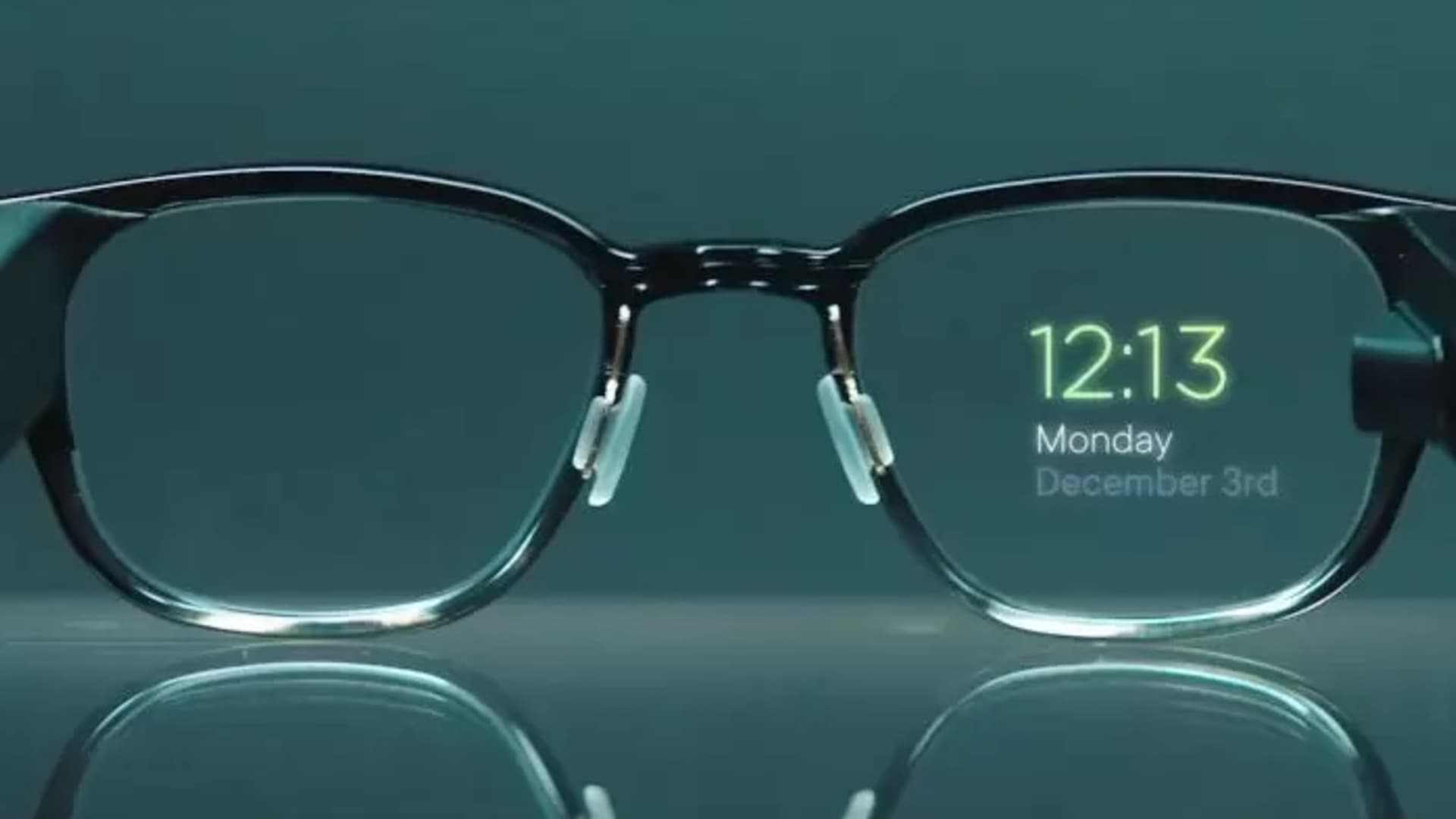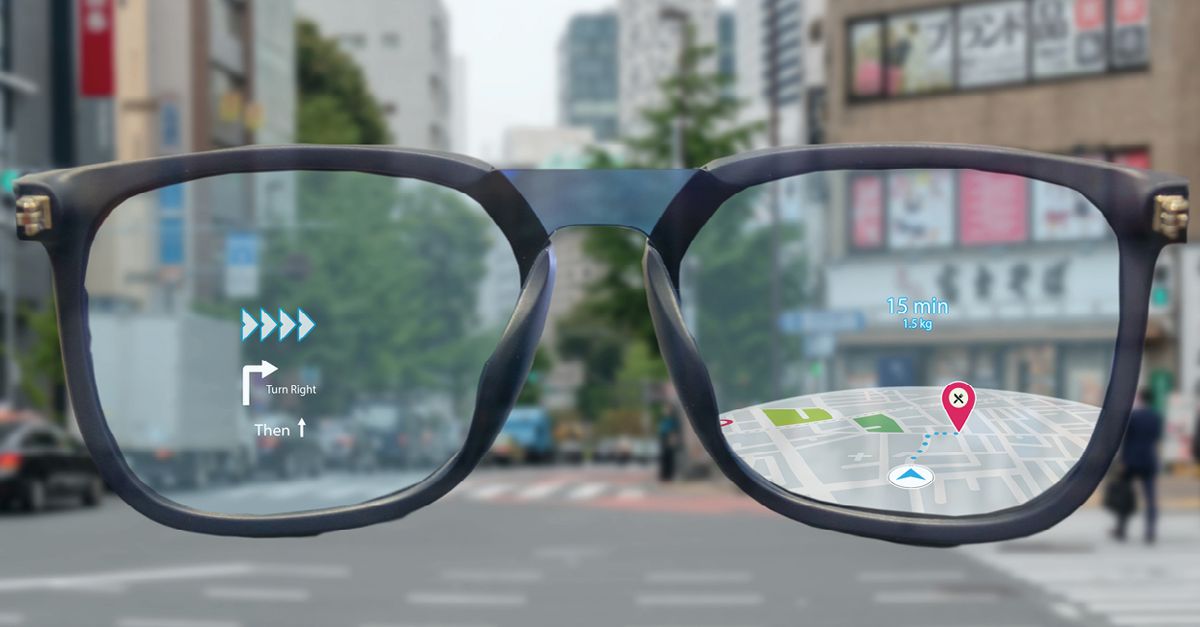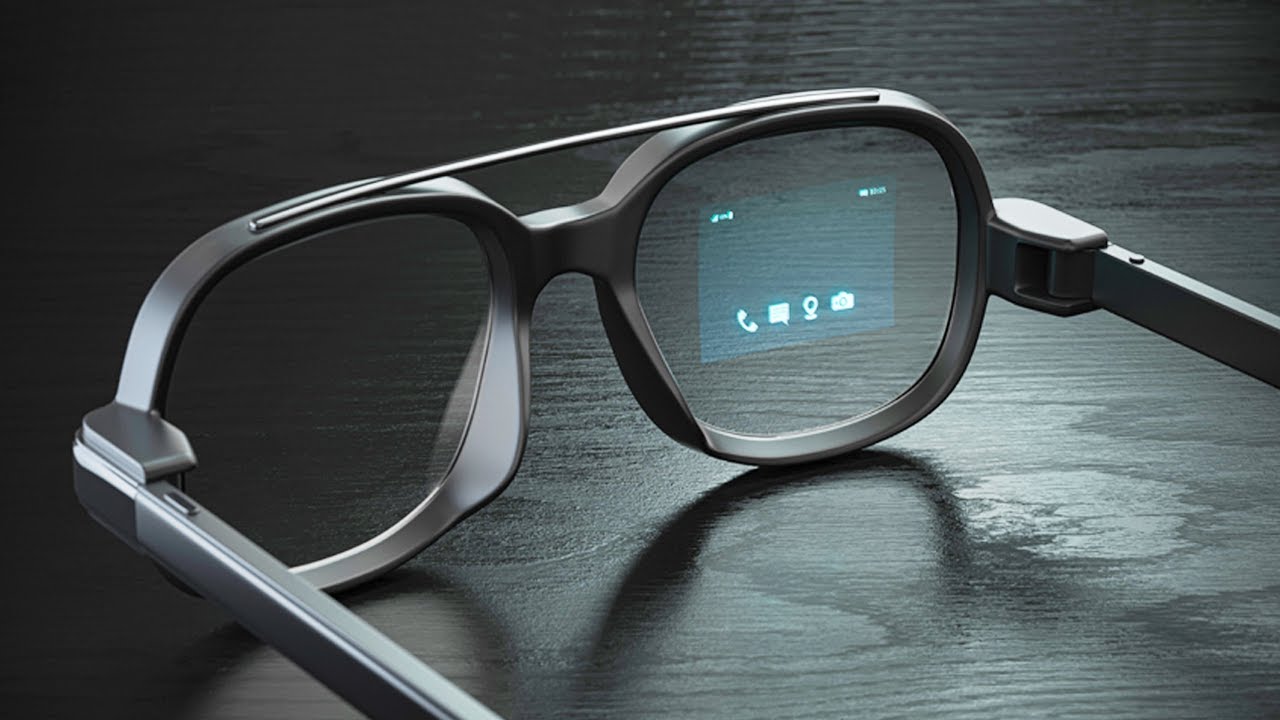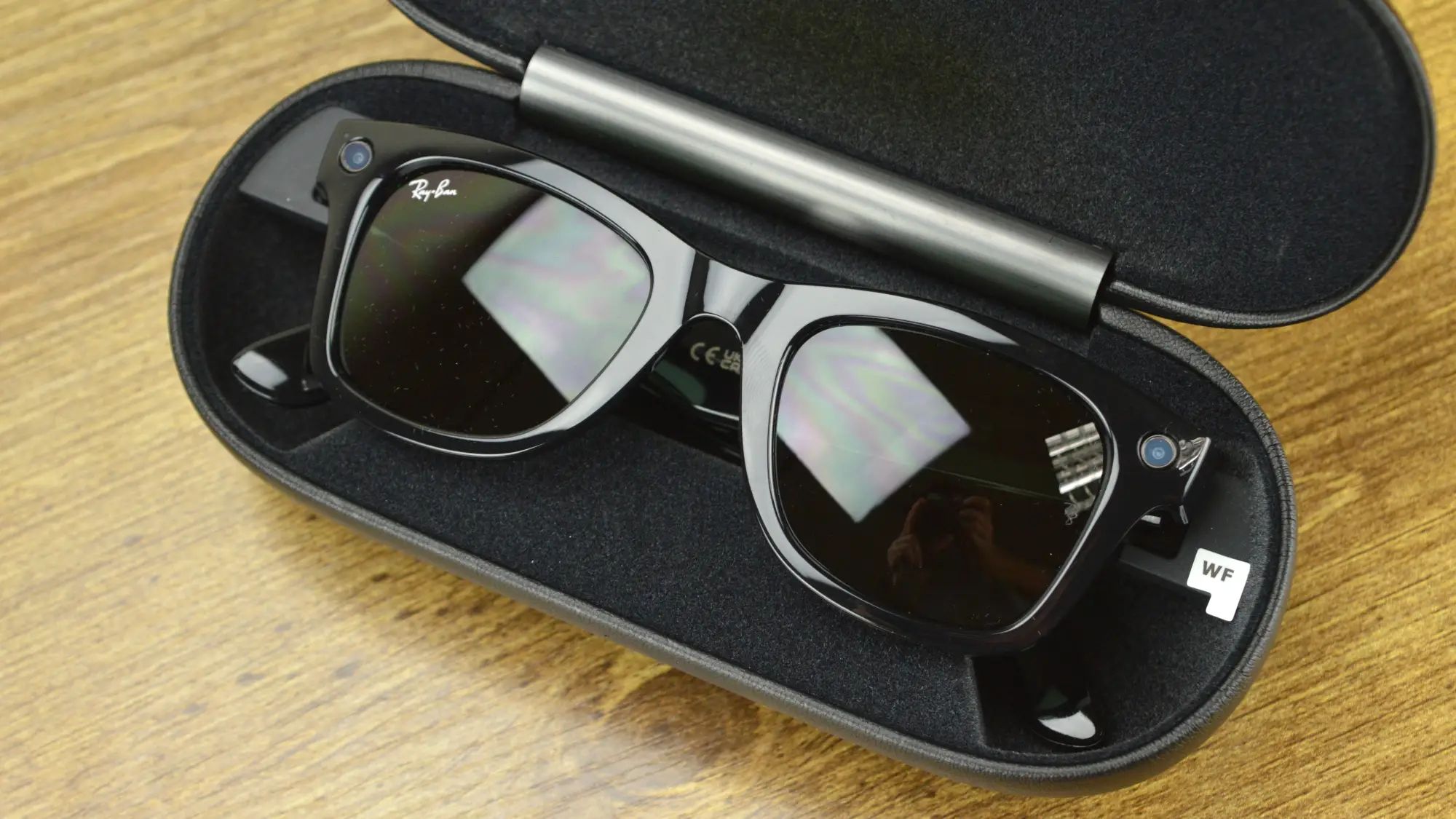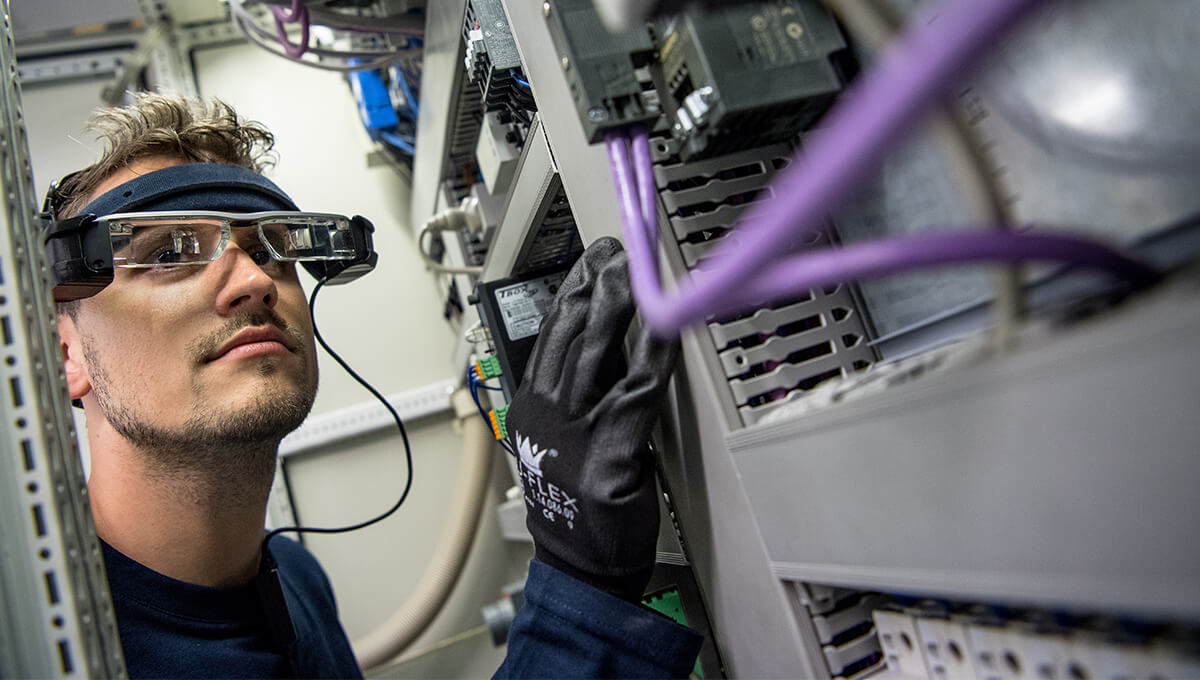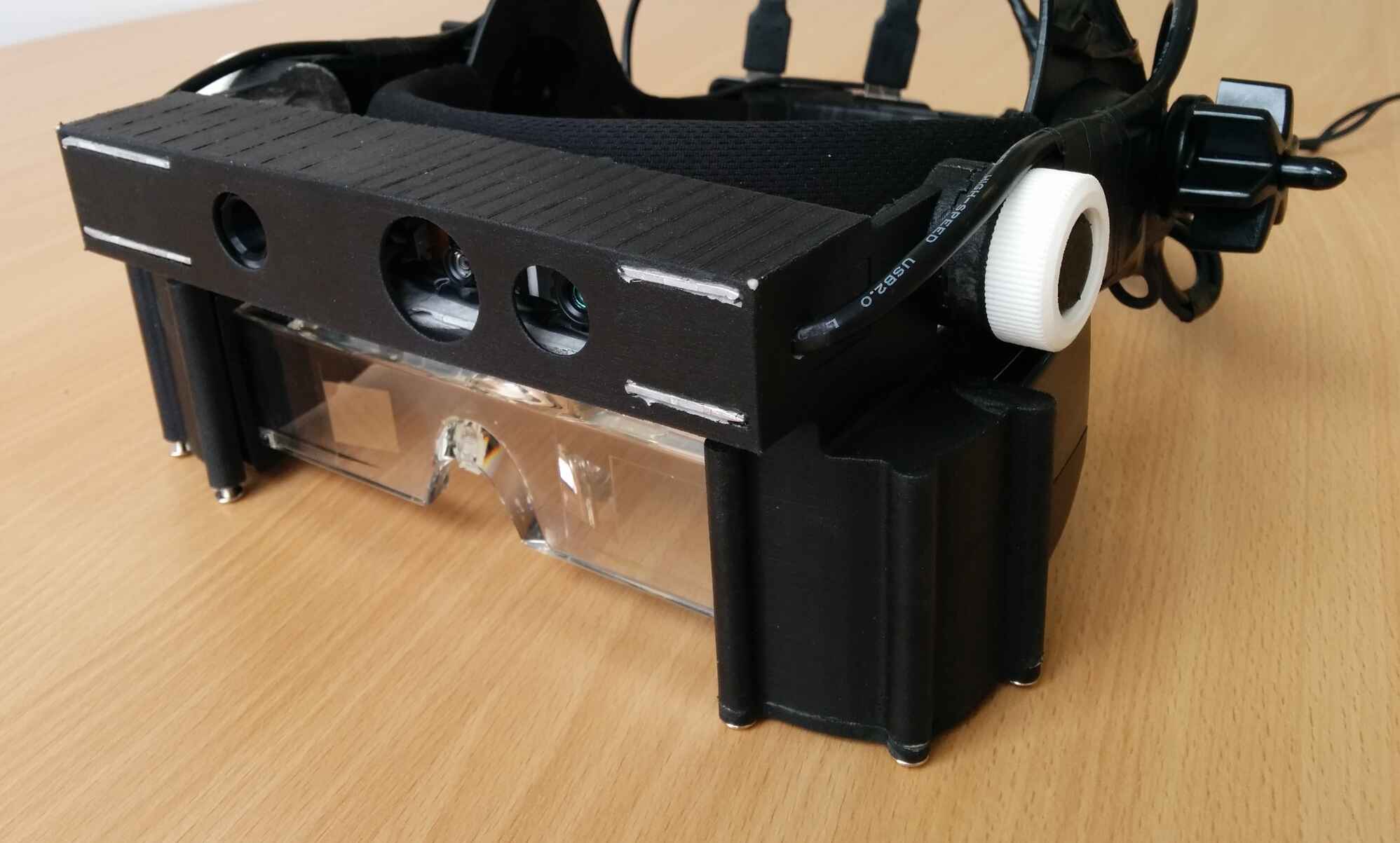Introduction
Welcome to the world of smart glasses, where technology seamlessly integrates with eyewear to provide a futuristic experience. Smart glasses are not just ordinary spectacles; they are a groundbreaking innovation that combines fashion, functionality, and cutting-edge technology. These intelligent eyewear devices have the potential to revolutionize the way we interact with the digital world.
Imagine a pair of glasses that can display information directly in your field of vision, make calls, send messages, capture photos and videos, track your fitness, navigate you to your destination, and even provide augmented reality experiences. Smart glasses offer all of these capabilities and more, making them a game-changer in the wearable technology market.
With smart glasses, gone are the days of constantly reaching for your smartphone or tablet to access information or perform tasks. Instead, you can now simply look through your glasses and interact with the digital world without diverting your attention or compromising your safety.
But how exactly do smart glasses work? What features and functions do they offer? What are their applications and limitations? In this article, we will delve into the fascinating world of smart glasses and explore their intricate details. Whether you’re a tech enthusiast or simply curious about the latest innovations, join us as we unwrap the potential of smart glasses and uncover the remarkable opportunities they bring.
What are Smart Glasses?
Smart glasses, also known as augmented reality (AR) glasses or digital eyewear, are wearable devices that combine the functionality of traditional eyeglasses with advanced technology. They incorporate a display or projection system that overlays digital information onto the wearer’s field of view, bringing together the physical and digital worlds in real-time.
Unlike virtual reality (VR) headsets that immerse users in a completely virtual environment, smart glasses provide an augmented reality experience. They enhance the user’s perception of reality by overlaying digital content such as images, videos, text, and 3D models onto their surroundings.
Smart glasses often come in the form of sleek frames that resemble regular eyeglasses, making them visually appealing and socially acceptable. Some models feature transparent lenses or waveguide displays, while others use holographic technology or micro-projectors to create the augmented reality effect.
What sets smart glasses apart is their ability to connect wirelessly to smartphones or other devices, enabling a wide range of functionalities. They can receive notifications, display maps and directions, provide hands-free access to information, capture photos and videos, make phone calls, and even perform voice commands.
These intelligent eyewear devices are designed to be intuitive and user-friendly, with controls typically integrated into the frames or accessible through voice commands or gestures. Some smart glasses even incorporate advanced sensors like accelerometers, gyroscopes, and ambient light sensors to enhance the user experience and enable more precise interactions.
Smart glasses are not limited to personal use – they also have the potential to transform various industries such as healthcare, manufacturing, logistics, and field services. In healthcare, for example, doctors can use smart glasses to access patient records, view medical images, and receive real-time guidance during surgeries without having to look away from the patient.
Overall, smart glasses offer a novel way to access digital information and interact with the world around us. They blend fashion with functionality, opening up new possibilities and opportunities for both individuals and businesses alike.
How do Smart Glasses Work?
Smart glasses may seem like something out of a science fiction movie, but the technology behind them is fascinatingly complex yet elegant. These innovative devices integrate a combination of hardware and software components to deliver their augmented reality experiences.
At the core of smart glasses is a display system that projects digital content onto the wearer’s field of view. The display can take various forms, such as a transparent screen, a waveguide, or even holographic technology. This display system works in tandem with sensors and cameras embedded in the glasses to track the wearer’s head movements and gather real-time data about their surroundings.
Using this data, smart glasses can render digital information and overlay it onto the user’s view of the real world. This overlay is seamlessly integrated with the wearer’s perspective, creating the illusion of holographic or augmented reality elements appearing within the physical environment.
The digital content displayed by smart glasses can range from simple text notifications and icons to more complex 3D models and animations. These visuals are typically superimposed onto the lenses of the glasses, allowing the wearer to see the digital information without obstructing their view of the real world.
Smart glasses also rely on wireless connectivity to communicate with other devices, such as smartphones or tablets. This enables them to access the internet, receive notifications, and interact with various apps and services. Some smart glasses even support voice commands or gesture recognition to provide hands-free navigation and control.
To ensure accurate tracking and positioning, smart glasses utilize a combination of sensors, including accelerometers, gyroscopes, magnetometers, and ambient light sensors. These sensors work together to detect the wearer’s movements, orientation, and environmental conditions. By continuously monitoring these parameters, smart glasses can adjust the digital overlay accordingly to maintain a seamless and immersive experience.
Additionally, smart glasses can incorporate cameras to capture photos and videos or enable augmented reality applications. These cameras may also be used for depth sensing or object recognition, allowing the glasses to understand and interact with the user’s surroundings more intelligently.
Overall, smart glasses leverage a sophisticated combination of displays, sensors, connectivity options, and intelligent software algorithms to create an immersive augmented reality experience. They are a testament to the convergence of technology and fashion, providing users with a unique way to interact with the digital world while staying connected to their physical environment.
Features and Functions of Smart Glasses
Smart glasses are not just a stylish accessory; they are packed with a plethora of features and functions that make them truly innovative and versatile. Let’s explore some of the key features that can be found in smart glasses:
Display System: Smart glasses employ various display technologies, including transparent screens, waveguides, and holographic displays, to project digital information onto the wearer’s field of view. This allows users to seamlessly view and interact with augmented reality content without obstructing their vision of the real world.
Connectivity: Smart glasses are equipped with wireless connectivity options such as Bluetooth and Wi-Fi, enabling them to interface with other devices like smartphones, tablets, and computers. This connectivity allows for real-time data transfer, access to the internet, and synchronization with various apps and services.
Notifications and Alerts: Smart glasses can receive and display notifications, such as incoming calls, messages, emails, and social media updates, directly in the wearer’s line of sight. This hands-free approach ensures that users can stay connected while keeping their attention focused on the task at hand.
Augmented Reality Experiences: One of the most exciting features of smart glasses is their ability to provide augmented reality experiences. Users can view digital content superimposed on their surroundings, such as 3D models, virtual objects, and useful information like directions, weather updates, and points of interest.
Voice Commands and Gesture Recognition: Many smart glasses offer voice command capabilities, allowing users to interact with the device using natural language. Users can issue voice commands to make phone calls, send messages, play music, and perform various other tasks. Some smart glasses also support gesture recognition, enabling users to navigate through menus and interact with virtual content using hand movements.
Photo and Video Capture: Smart glasses often feature integrated cameras that allow users to capture photos and videos hands-free. This feature is especially useful for recording memorable moments, documenting work processes, or sharing a first-person perspective with others.
Fitness and Health Tracking: Many smart glasses incorporate fitness tracking features, such as step counting, distance measurement, and heart rate monitoring. These capabilities allow users to monitor their physical activity levels and track their health metrics conveniently.
Navigation and GPS: With built-in GPS capabilities, smart glasses can provide turn-by-turn directions, real-time navigation, and points of interest based on the wearer’s location. This feature is particularly useful for activities such as hiking, cycling, and exploring unfamiliar areas.
These are just a few examples of the many features and functions that smart glasses offer. As technology continues to advance, we can expect to see even more innovative capabilities added to future generations of smart glasses, expanding the possibilities for users and industry applications.
Applications of Smart Glasses
Smart glasses have a wide range of applications across various industries, revolutionizing how we work, communicate, and interact with the world around us. Let’s explore some of the key areas where smart glasses are making a significant impact:
Field Services and Maintenance: Smart glasses provide valuable assistance in field services and maintenance tasks. Technicians can access real-time data, instructions, and troubleshooting guides directly in their line of sight, enabling them to perform complex repairs and maintenance tasks more efficiently. This hands-free approach improves productivity, reduces errors, and enhances worker safety.
Healthcare and Telemedicine: In the healthcare industry, smart glasses can be used to improve patient care and streamline workflows. Doctors and nurses can access patient records, view medical images, and receive real-time guidance during procedures without having to look away from the patient or consult separate devices. Telemedicine is also enhanced through smart glasses, as healthcare professionals can conduct remote consultations and receive live video feeds from patients wearing the glasses.
Manufacturing and Logistics: Smart glasses are transforming manufacturing and logistics operations by providing workers with real-time information, inventory tracking, and step-by-step guidance. Warehouse workers can have their hands free while picking and packing orders, as the smart glasses display the relevant information directly in their field of view, reducing errors and improving accuracy.
Remote Assistance and Training: With smart glasses, experts can remotely provide guidance and support to workers in the field. Through live video feeds and two-way communication, experts can see what the wearer sees and provide instructions or visual annotations in real-time. This capability is invaluable in industries such as construction, utilities, and oil and gas, where experts may not be physically present at the location.
Educational and Training Simulations: Smart glasses offer exciting opportunities in the field of education and training. They can be used to create immersive simulations, allowing students and trainees to engage in hands-on learning experiences. For example, medical students can practice surgical procedures, engineers can simulate complex machinery maintenance, and pilots can train for flight simulations, all within a virtual environment.
Sports and Fitness: Smart glasses are becoming increasingly popular among fitness enthusiasts and sports professionals. Athletes can receive real-time performance metrics, track their workouts, and receive personalized coaching tips directly through the glasses. These features help athletes optimize their training, improve performance, and prevent injuries.
Entertainment and Gaming: Smart glasses offer unique opportunities for entertainment and gaming experiences. They can provide immersive augmented reality gaming, where virtual characters and objects interact with the player’s real-world environment. Smart glasses can also be used to enhance movie-watching experiences by overlaying additional information or 3D effects onto the screen.
These applications are just the beginning, as smart glasses continue to evolve and unlock new possibilities. With their ability to seamlessly blend digital content with the real world, smart glasses are poised to revolutionize numerous industries and transform the way we live, work, and play.
Benefits and Limitations of Smart Glasses
Smart glasses offer a range of benefits that make them a compelling technology for various applications. However, like any innovation, they also come with certain limitations. Let’s explore the advantages and considerations of smart glasses:
Benefits of Smart Glasses:
Enhanced Efficiency and Productivity: Smart glasses enable users to access information and perform tasks hands-free, allowing for increased efficiency and productivity. With important data and instructions displayed directly in the wearer’s line of sight, they can complete tasks more quickly and accurately.
Improved Safety: By eliminating the need to constantly look down at screens or devices, smart glasses enhance safety in various scenarios. Workers can keep their attention on the task at hand, whether it’s repairing equipment, navigating hazardous environments, or performing medical procedures.
Real-time Information and Notifications: Smart glasses provide real-time access to information, notifications, and alerts without the need to pick up a phone or tablet. Users can receive updates, messages, and important notifications directly in their field of view, keeping them connected and informed on the go.
Hands-free Interaction: Smart glasses offer hands-free interaction, allowing users to control the device using voice commands, gestures, or head movements. This feature is particularly beneficial in situations where manual dexterity is limited or when users need to keep their hands free for other tasks.
Augmented Reality Experiences: With smart glasses, users can experience augmented reality by overlaying digital content onto their real-world environment. This capability opens up a new realm of possibilities in gaming, education, training, and entertainment, providing immersive and interactive experiences.
Limitations of Smart Glasses:
Battery Life: Smart glasses often have limited battery life due to the power requirements of their hardware components. Continuous use or demanding applications may require frequent recharging, which could be an inconvenience for users on the go.
Design and Appearance: While smart glasses have come a long way in terms of design, some users may still find them bulky or conspicuous. Achieving a balance between functionality and aesthetics remains a challenge for manufacturers.
Privacy and Security: Smart glasses that can capture photos and videos raise concerns about privacy and security. To address these concerns, it is essential for manufacturers to implement robust privacy features and educate users on responsible usage.
Cost: Currently, smart glasses tend to be more expensive compared to traditional eyewear. The technology involved and the hardware components contribute to the higher price point. However, as the technology advances and demand grows, costs are expected to decrease over time.
Usability and Learning Curve: Smart glasses may require some initial adjustment and a learning curve for users to become comfortable with the gestures, voice commands, or other modes of interaction. The user interface and controls need to be intuitive and user-friendly to ensure a smooth and enjoyable experience.
As technology continues to evolve, these limitations may diminish or be addressed by advancements in the field. The benefits of smart glasses, combined with ongoing innovation, make them an exciting and promising technology for the future.
Popular Smart Glasses on the Market
The market for smart glasses has been steadily growing, with various companies introducing their own innovative offerings. Let’s take a look at some popular smart glasses available today:
1. Google Glass: Google Glass, one of the earliest and most well-known smart glasses, offers a hands-free display that allows users to access information, take photos and videos, and perform various tasks. It features voice command functionality and a sleek, lightweight design.
2. Microsoft HoloLens: Microsoft HoloLens is a mixed reality headset that blends the virtual world with the real world. It provides an immersive, holographic experience, enabling users to interact with 3D content and applications. HoloLens has applications in gaming, training, and enterprise use cases.
3. Vuzix Blade AR Glasses: The Vuzix Blade AR Glasses feature a sleek design and offer augmented reality capabilities. They provide a heads-up display, voice control, and smartphone connectivity. With the Vuzix Blade, users can access information, make calls, and view notifications directly in their field of view.
4. Bose Frames: Bose Frames are smart glasses that combine audio functionality with classic eyewear design. They feature built-in speakers that allow users to listen to music, make phone calls, and access voice assistants while still being able to hear the world around them. Bose Frames are sleek, lightweight, and offer polarized lenses for sun protection.
5. North Focals: North Focals are stylish smart glasses that aim to blend seamlessly into everyday life. They have a discreet display that appears only when needed, offering personalized information and notifications. North Focals can also integrate with voice assistants and provide directions and weather updates.
6. Epson Moverio BT-300: The Epson Moverio BT-300 is a binocular display system that offers augmented reality experiences. They are lightweight, comfortable to wear, and provide a wide field of view. The Epson Moverio BT-300 is popular in industries such as healthcare, remote assistance, and retail applications.
7. Rokid Glass: Rokid Glass is an AR glasses solution designed for enterprise applications. It offers voice control, facial recognition, and advanced AI capabilities. Rokid Glass is used in industries such as logistics, healthcare, and manufacturing for hands-free data access and remote assistance.
8. Nreal Light: Nreal Light is a sleek and lightweight mixed reality glasses solution. It provides immersive augmented reality experiences with a wide field of view and high-quality visuals. Nreal Light can be tethered to a compatible smartphone or PC, offering a wide range of applications.
These are just a few examples of popular smart glasses currently available in the market. Each device has its own unique features, design, and target audience. As the technology continues to evolve, we can expect more advancements and new entrants into the growing smart glasses market.
Conclusion
Smart glasses have emerged as a groundbreaking technology that seamlessly integrates digital information with our everyday lives. They offer a range of features and functions that enhance efficiency, productivity, and safety across various industries. From field services and healthcare to entertainment and gaming, smart glasses are reshaping the way we work, communicate, and interact with the world.
With their ability to provide augmented reality experiences, smart glasses bridge the gap between the physical and digital worlds. They offer hands-free access to real-time information, notifications, and instructions, enabling users to stay connected and informed while keeping their attention focused on the task at hand.
While there are limitations to consider, such as battery life, design, and cost, ongoing advancements in technology are addressing these challenges and making smart glasses more practical and accessible. As the market continues to evolve, we can expect to see sleeker designs, longer battery life, and improved user interfaces.
From Google Glass and Microsoft HoloLens to Vuzix Blade and Bose Frames, there is a diverse range of smart glasses available to meet different needs and preferences. Each device brings its own set of features and capabilities, catering to various industries and use cases.
As technology continues to advance, smart glasses are poised to become even more sophisticated and integrated into our daily lives. With ongoing developments in augmented reality, advanced sensors, and artificial intelligence, the future of smart glasses holds great promise.
Whether it’s improving productivity in the workplace, enhancing entertainment experiences, or revolutionizing healthcare and field services, smart glasses are set to transform the way we perceive and interact with the world around us.
With their potential to blend fashion with functionality, smart glasses have the power to shape the future and unlock new opportunities for innovation and creativity. As we embark on this journey, it’s exciting to see how smart glasses will continue to evolve and revolutionize the way we experience and interact with technology.







